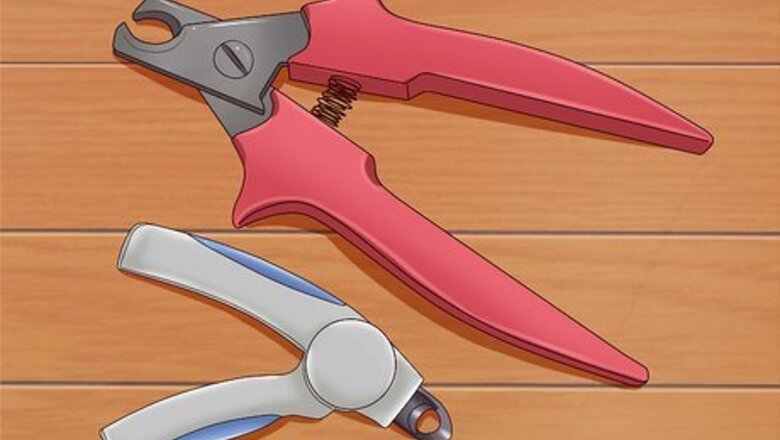
views
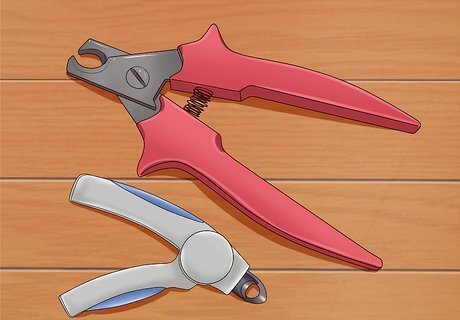
Get your supplies ready. These include soap, water, nail trimmers, gauze, cotton gauze, stretch gauze, nonabsorbent pad, antibacterial ointment, and vet wrap.
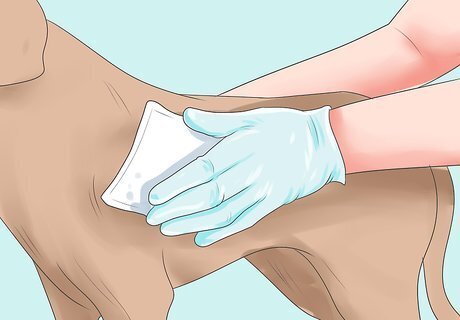
Apply pressure to stop any bleeding. Using a gauze square or paper towel apply pressure to the toe to slow down the bleeding. Do not panic, as torn nails tend to bleed heavily at first due to the large vein inside the nail known as the quick.

Trim down the torn nail. If there is a piece of the nail still loosely hanging off, trim this down so it does not lead to any further injury. It is best to trim down to where the break in the nail is. If the nail is broken down to the nail bed or very close to it then it is best to consult with a veterinarian so you do not cause further damage or infection to the paw. If the nail is broken but still attached firmly it is best to consult a veterinarian so no unnecessary pain is caused in treatment.
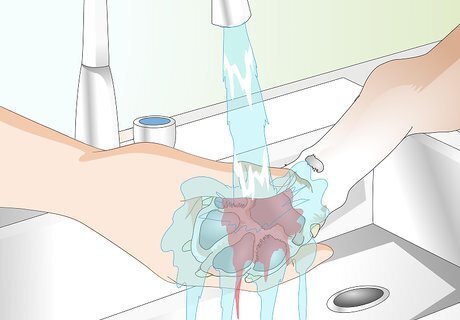
Soak the paw in warm soapy water. Not only will this cause relief for the pain, it will also allow for the area to be disinfected further preventing any infections. Leave the paw in the soapy water for a few minutes to allow for proper cleaning of any debris.
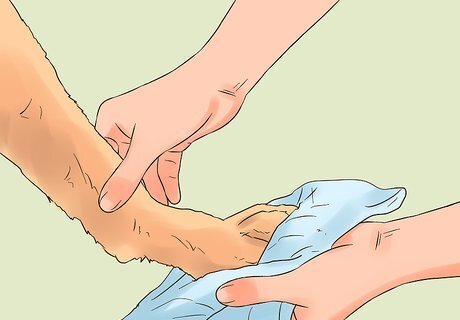
Dry off the paw thoroughly. With a clean towel pat the paw dry. Make sure the paw is completely dry before bandaging is done to prevent any further infection of the surrounding toes.

Apply antibacterial ointment to the affected toe. Using any over the counter ointment such as Neosporin, apply a small amount onto the broken nail to prevent any infection.
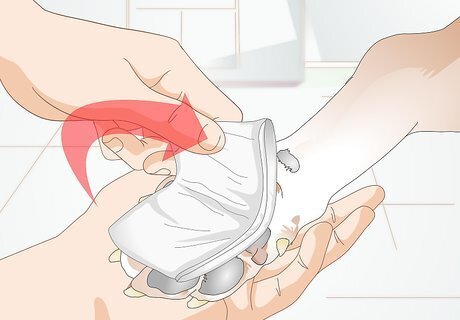
Apply a nonabsorbent pad to the torn toe. Take the pad and carefully wrap the affected toe with the pad. Sticking the pad in between the toes and around it can help stabilize the pad.
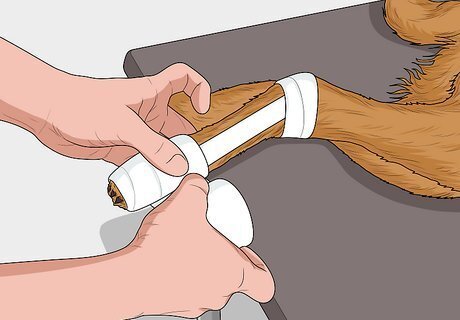
Create tape stirrups to stabilize the bandage. To create tape stirrups you take two six to ten-inch length pieces of medical grade tape and apply them to the top and bottom of the paw. Make sure the tape goes up to at least the wrist on the dog’s leg.
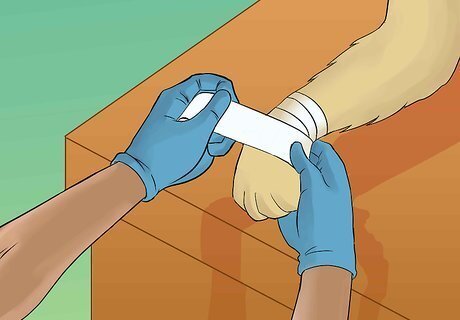
Wrap the paw with cotton gauze. Wrap the entire paw including the toes with the cotton gauze. Go up below the wrist when wrapping the paw leaving about 2-3 inches of the tape uncovered by the gauze. You want to have a thick layer of padding with the cotton gauze so wrap the cotton around 4 to 5 times.

Wrap the paw with stretch gauze. Firmly wrap over the cotton gauze to allow for some tension to keep the bandage together. Wrap around the whole paw and up until where your cotton gauze ended.
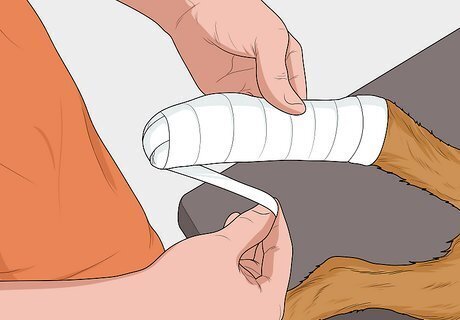
Secure the tape. Take the tape you left sticking out of your bandage twist it and bend it down so that the sticky part is facing down towards the bandage. Stick this to your bandage as far down as it will reach this will help so that the bandage does not fall off. You can then take extra tape and wrap it around the top of the bandage to secure it. As well as at the bottom of the bandage where it will be touching the ground.
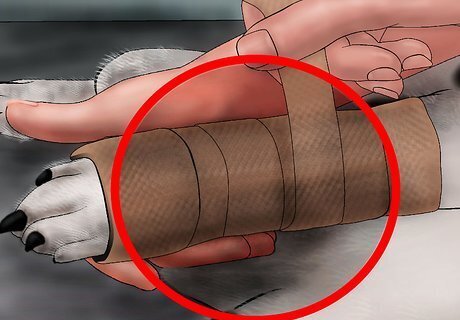
Wrap with vet wrap. Take your vet wrap and wrap it once around the entire paw to secure everything. Make sure to cover up all of the gauze and tape to as this helps keep them clean.

Keep the paw dry and clean. Now that the bandage is on you do not want it to get wet or dirty to prevent infection. When your dog goes outside tie a plastic bag around the entire bandage so no dirt can touch it.
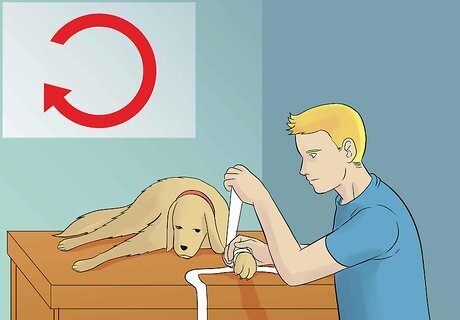
Change the bandage every 3-4 days until it has healed. To prevent infection, make sure to keep changing the bandage out so there are new clean supplies on it. This also allows you to check for any signs of infections such as redness or swelling in the area.













Comments
0 comment